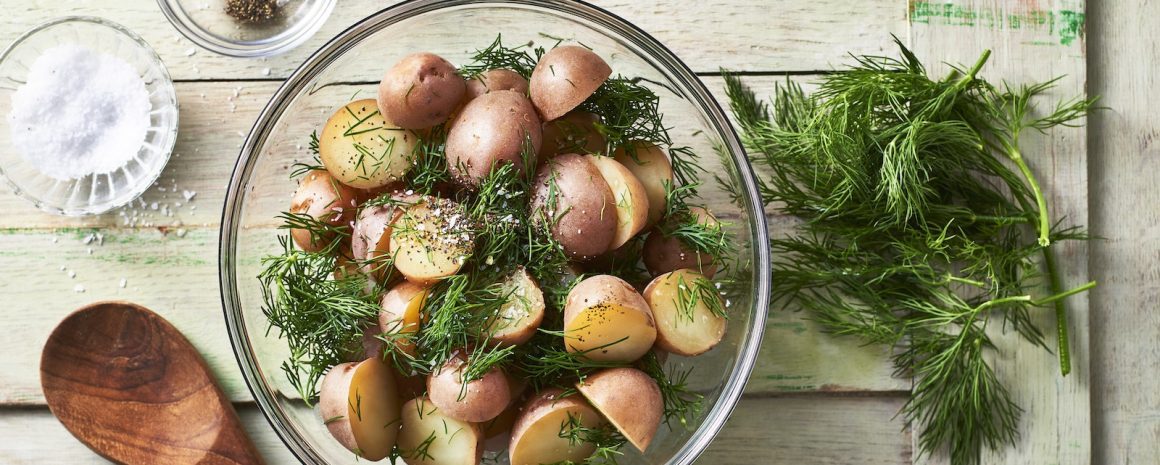When you live in northern climates, bracing yourself for the elements isn’t the only thing to think about in the winter. The lack of sunshine, limited seasonal produce, and a tendency to want more warming comfort foods can create nutritional deficiencies that can set the stage for illness and low energy.
Changing your diet to eat with the seasons starts by understanding some of the nutrients that we tend to be lower in during the colder months. Armed with the knowledge about what might be missing you can tweak your diet to get the nutrition you need to stay healthy, happy, (not to mention warm!) all season long.
Nutrients You May Be Missing in The Winter & Winter Nutrition Tips
Potassium
As an electrolyte, potassium is an essential mineral that functions to maintain fluid balance in our body and keep our blood pressure healthy. It is also active in carbohydrate metabolism and is needed for building muscle.1
Potassium is abundant in fresh fruits and veggies, and when we are eating lots of those (as we tend to do in the summer when everything is at its best!), our diet has us covered.
The challenge, however, comes when we start to introduce more processed foods to our diet. Sodium, potassium’s counter, is often added in large quantities to these types of food, which throws the delicate sodium-potassium balance out of whack. Over time this can lead to low energy levels, increased blood pressure, and mood changes.1
To make sure you are getting enough potassium in your diet through the winter months, look to Little Potatoes.
Naturally high in potassium (more than a banana) and with 0 mg of sodium, they are a great way to ensure you are consuming enough potassium through the cold winter months.
Vitamin C
Vitamin C is an essential nutrient, meaning that we have to consume it through our diet (we can’t make it like we can with some other nutrients).
As a water-soluble vitamin (meaning it dissolves in water), we also can’t store it in our body, but instead, have to consume it every day.
During times of illness, stress, or if we are drinking too much (hello, holidays) our need for vitamin C increases.1
Like potassium, vitamin C is found in fresh fruits and veggies.
Eating a poor diet, high in processed foods, can reduce our intake of vitamin C, resulting in a weakened immune system, poor iron absorption, and impaired wound healing.1,2
To get your daily dose of vitamin C in the winter, include foods like:
- Little Potatoes (which have 10% of your daily value of vitamin C in just six potatoes),
- seasonal fruits (oranges, clementines, grapefruits, and pomegranates) and
- hearty winter greens like kale are on your menu every day.
Fiber
Pastries, cookies, cheese plates, and cups of hot chocolate.
With the holidays, and all its seasonal fare, eating sugary sweets and dairy delights is easy, making sure you get your daily roughage, less so.
Fiber helps to:
- keep us feeling fuller longer (fewer trips to the dessert table!),
- keep our blood sugar levels steady,
- promote healthy digestion (think less of that uncomfortable bloated feeling).
A healthy diet should include 25 to 38 grams of fiber every single day.3
To get this amount you should aim to have 1 to 2 servings of veggies, like Little Potatoes (3 grams of fiber per serving), at every meal and snack.
Other great sources of fiber include whole, unprocessed grains, winter veggies (like kale, chard, or pumpkin), nuts, seeds, and legumes (like chickpeas, or lentils).
Vitamin D
It should come as no surprise that something nicknamed the ‘sunshine vitamin’ is in low supply during the dark days of November to March.
Vitamin D is primarily produced when our skin is exposed to the sun. For us living in northern latitudes though, even on the sunniest days, the UV light just isn’t strong enough to produce what we need.
Vitamin D plays a critical role in calcium absorption, keeping our bones strong and healthy.4
In the past decade or so, we have also learned that vitamin D plays an active role in our cells and tissues reducing the risk of developing certain cancers, autoimmune diseases, cardiac diseases, and infection.4
Unfortunately, vitamin D isn’t readily found naturally in many of the foods we consume.
During the winter months, it’s a good idea to try to consume more cold-water fish like salmon, tuna, as well as eggs (specifically the yolks) to help meet your vitamin D requirements.
As humans, we tend to be creatures of habit, and our diet is no exception.
Being mindful of the seasonal changes that occur in our food, and the nutritional impact that may have on our body can be a great way to inspire variety in what we eat.
Get creative in the kitchen and try new foods and recipes that can fill seasonal nutrient gaps.
References
- Haas, E.M. Staying Healthy with Nutrition. Ten Speed Press.
- http://lpi.oregonstate.edu/mic/health-disease/skin-health/vitamin-C
- https://www.dietitians.ca/Downloads/Factsheets/Guidelines-for-Increasing-Fibre-Intake.aspx
- https://www.health.harvard.edu/staying-healthy/time-for-more-vitamin-d



